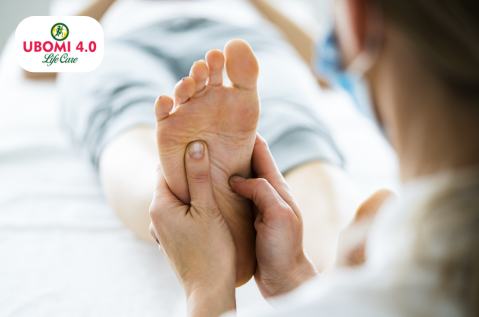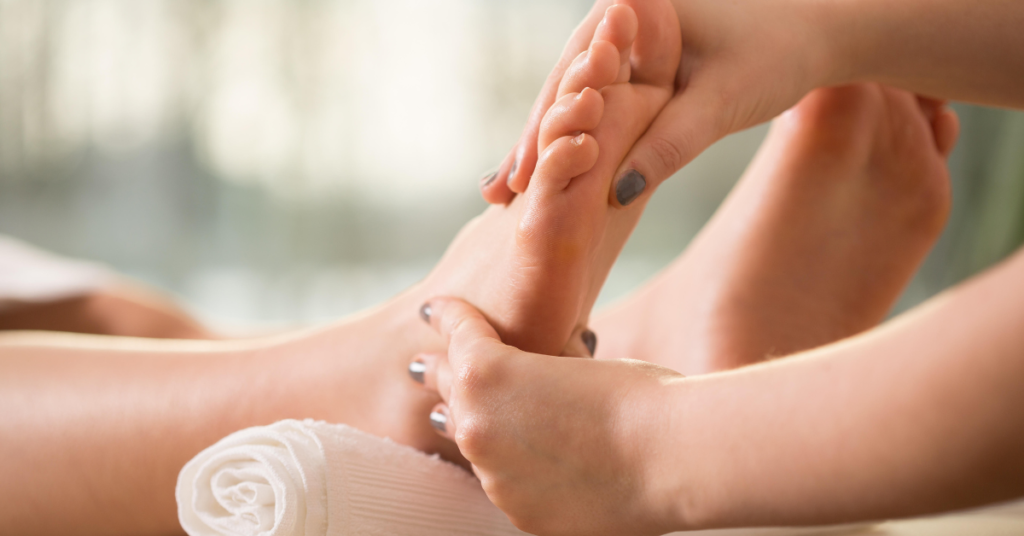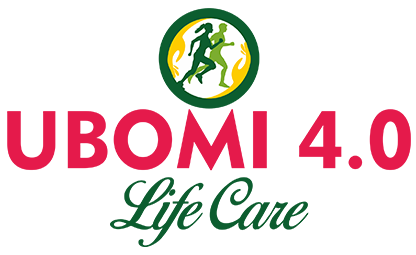
July 4, 2025
Stress, fatigue and body strain have become the order of the day in our hectic world. Despite the different treatment methods suggested by modern medicine, many individuals are turning out to be more interested in adopting holistic approaches to attaining improved health and relaxation. Foot reflexology and massage are one such potent practice.
It is an ancient therapy that has been practised throughout centuries and is well known to promote physical and mental well-being. It is an integrative system that uses pinpointing pressure on specific areas on feet and uses relaxing massage variations in order to activate the healing process and deep relaxation.
What Is Foot Reflexology and Massage?
Non-invasive foot reflexology and massage are anchored in the principle that certain parts of the body are linked to certain parts of the foot. Practitioners put pressure on these reflex points in a bid to stimulate the nervous system and boost circulation and balance in the body.
It can be easily mixed with the ordinary foot massage, yet there is a certain distinction, i.e., the reflexology aims at specific zones, whereas the massage is primarily concentrated on muscle relaxation.

Reflex Zones in the Feet: What They Represent
Here’s a helpful table that outlines some major reflex points and the corresponding body parts they are believed to influence:
| Foot Reflex Zone | Corresponding Body Part/Function |
| Toes | Head, Brain, Sinuses |
| Ball of the Foot | Lower Back and Sciatic Nerve |
| Arch of the Foot | Liver, Pancreas, Kidneys |
| Heel | Arms and Shoulders |
| Inner Edge of Foot | Spine |
| Outer Edge of Foot | Eyes & Ears |
| Base of Toes | Eyes, Ears |
This mapping forms the foundation of foot reflexology and massage techniques and helps the practitioner determine where to focus pressure for healing benefits.
How Foot Reflexology and Massage Work
Thumb and finger pressure applied to the reflex zones is used in the therapy. This stimulation transmits messages via the nervous system to the brain and inspires the body to:
- Release tension
- Improve circulation
- Stimulate to maintain organ balance
- Initiate natural healing effects
These effects are compounded by the kneading of muscles when massage is done, thus resulting in relaxation of the body and emotions.
Top Benefits of Foot Reflexology and Massage
- Relieves Stress and Anxiety
The parasympathetic nervous system is activated by foot reflexology and massage. Such activation can decrease stress levels and produce an overall calming atmosphere. Through various studies, it has been demonstrated that with regular treatments, a drop in the level of cortisol – the stress hormone – can be recorded, thus helping in anxiety management.
- Boosts Blood Circulation
One of the main advantages is better circulation. Massage to the foot will stimulate blood circulation to the vital organs and provide tissues with more oxygen and nutrients by increasing the blood supply to the tissues and enhancing healing.
- Supports Digestive Health
Stimulating the reflex zones of the stomach, intestines and liver enhances digestion. The first example is foot reflexology and massage, which may help in relieving symptoms such as constipation, bloating, and acid reflux.
- Eases Chronic Pain
The treatment relieves chronic pain, be it in the back or in the form of migraines or joint pains, as the nerve endings get stimulated and endorphins, or natural painkillers, are released in the body.
- Glasses that Improve Sleep
Foot reflexology and massage are relaxing, making the patients with insomnia benefit. Sessions stabilize the hormones that deal with sleep and reduces restless thinking.
- Hormonal Balance
The endocrine-related glands are known as reflex points and they balance the hormones naturally. It may be particularly beneficial for PMS, thyroid problems and menopausal symptoms.
- Improves the immune system
The stimulation of the body through the lymphatic system and the reflex points of the spleen makes the body more productive in terms of getting rid of toxins and infections
Who Should Try Foot Reflexology and Massage?
This is a treatment for which anybody of any age and background can be treated. It is better, particularly in:
- Stressed and back-pained office workers
- Seniors having problems with circulation
- Muscle Recovery for Athletes
- Females will have some hormonal imbalance
- Individuals who have recovered from disease or operation
Most people can use foot reflexology and massage, but it is advisable to see a healthcare expert before starting in case you have an open wound, deep vein thrombosis or a significant foot injury.
What Happens During a Session?
This is a general step forward of what to expect:
- Consultation: Your practitioner will enquire about any health problems.
- Start of Relaxations: You will be resting in a chair or on a table.
- Reflex Work: The therapist employs a method of finger pressure.
- Massage Integration: Easy body movements at the end of the process.
- Post-Care: Drink lots of water to aid removal of toxins.
A typical session takes 30-60 minutes and can either rev you up or put you into a restful state.
DIY Foot Reflexology and Massage: A Simple Routine
If you cannot get to a person that can perform reflexology or if you cannot meet a reflexologist, you may create an at-home reflexology and foot massage model of it.
Simple Steps:
Immobilise your feet: warm water with Epsom salts.
Apply ointment or cream: coconut or lavender will do.
Use fingers: Use your thumbs by applying firm pressure on certain areas (see the table above).
Warm the muscles by: massage in circular directions, particularly around the arch and heel.
Apply relaxation strokes: Or envelop your feet in a warm towel.
This can be done daily (10-15 minutes a day) and this will greatly help in foot fatigue reduction and increase relaxation.
Tips for Best Results
- Plan: to meet regularly, weekly or twice a week.
- Be added to additional treatments: yoga or acupuncture.
- Drink lots of water after therapy.
- Express during sessions discomfort.
- Apply essential oils to derive additional advantages.
Common Questions About Foot Reflexology and Massage
Q: Does reflexology hurt?
A: It is never painful. Minor pain in some areas is natural and may be atypical.
Q: How frequently shall I have it done?
A: Even to maintain just basic well-being, one time a week is enough. For chronic problems, such recommendations can be made 2 or 3 times per week.
Q: Is it a substitute for medical treatment?
A: No. Foot massage and foot reflexology are complementary medications and cannot be used as an alternative to medical treatment.

The Natural Path to Healing Starts with Your Feet
Foot reflexology and massage give you a non-invasive method of treating your body and enhancing health and well-being. This therapy is used to alleviate stress and relieve pain or other sensations by applying a certain amount of pressure on specific reflex areas of the feet, which accelerates the natural healing processes in the body, increases circulation and helps in the balancing of hormones besides enhancing relaxation.
Foot reflexology treatment can be very helpful whether you already have an issue of daily fatigue or chronic pain or you just need to take it easy. A routine foot reflexology session can help an awful lot. It is appropriate for anyone of any age, and you can exercise at work and at home to get continued advantages.
Stress and pain will not wait till they control your life. Feel the therapeutic effects of foot reflexology and massage and provide your body with the care that it deserves.
Find out more about our professional reflexology foot therapy services by visiting the UBOMI 4.0 site and make your health journey to better health a step today.
